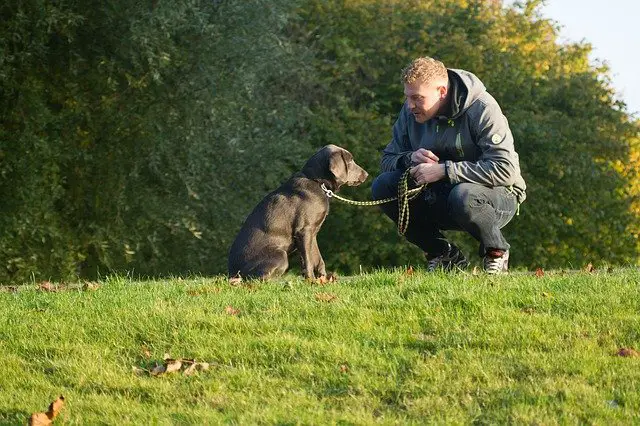Last modified on October 13th, 2020 at 10:32 pm
What To Do When Your Dog Is Sad
Your usual happy-go-lucky dog is suddenly lethargic. They went from happily greeting you every time you walked in the door to sleeping most of the day. Perhaps their appetite has decreased, or maybe they’ve lost interest in the toys they were once obsessed with at playtime? You may be wondering: “is my pooch sad?”
While there have not been any studies on a sad dogs’ mental state, any dog owner will tell you that yes, dogs can and do get depressed. A depressed dog is not necessarily the same as a depressed human. However, they do experience the same emotions as people.
If you’re looking to get your happy dog back, your first step should be figuring out why your canine is sad in the first place.
Causes of Depression in Dogs
Dogs get depressed for similar reasons as humans. However, because they lack the general reasoning skills that we have, they may become sad for reasons that we necessarily wouldn’t be. Things that might not bother us much at all can thoroughly shake a dog’s world. Furthermore, they likely aren’t going to get sad for some of the reasons we might, like financial difficulties or the loss of a job.
Here are some of the most common reasons dogs become depressed:
A change in living situation
Whether you’ve recently moved to a new home or you just recently adopted your dog, a sudden change in a living situation can quickly put a damper on a dog’s mood. Because they lack language, they won’t be able to figure out why the move happened and we won’t be able to reassure them afterward. Temporary moves, like boarding, can cause sadness as well.
New Family Member
If you’ve recently brought home a new member of the family, including a new pet, your dog might not be handling it very well. Some dogs just do not handle changes with flying colors. Just like a child, they might feel like their place in the family has been taken by someone else.
Loss of a Family Member
Similarly, if a different pet has recently passed or a family member moved away, your canine can get sad just like a human might. Losing someone close to you can be very uprooting, even if they’ve only moved across town. Also, a family member changing rooms can cause depression in some dogs, especially if they have less access to the family member’s new location.
A Change in Schedule
Perhaps you’ve got a new job or maybe you’ve just gotten a new class schedule. Whatever the reason, any time your schedule changes substantially, your canine’s mental state might suffer. Your dog won’t be able to understand that you’re only coming home a few hours later and might panic when you don’t show up at your usual time.
How to Know Your Dog is Sad
Sometimes, you can tell something is wrong with your furry friend based on how your dog looks. Other times, it can be more challenging to determine. Here are some of the most common signs of depression in dogs.
- Inactivity
- Change in eating or sleeping
- Lose of interest in playtime
- Behavior changes
What to do if Your Dog is Depressed
According to experts at Doggypedia, “If you’ve noticed that your dog is sadder than usual, it is essential to take them for a checkup. Sometimes, physical health problems can mimic depression.”
A dog that appears more lethargic might actually just have arthritis, for example. You need to ensure that your canine doesn’t have a medical issue before moving further.
If your dog’s health is otherwise in the clear, your dog is likely just sadder than usual. Time is often the best treatment in these situations. You can help your canine by doing more things they like. Take them to the dog park. Go on adventures in the woods.
In severe cases, you may want to take your dog to a behaviorist. They can help you come up with some strategies to help your dog and might even prescribe a medication like Prozac. You might even learn that your dog doesn’t have depression at all, but a similar condition like separation anxiety.




